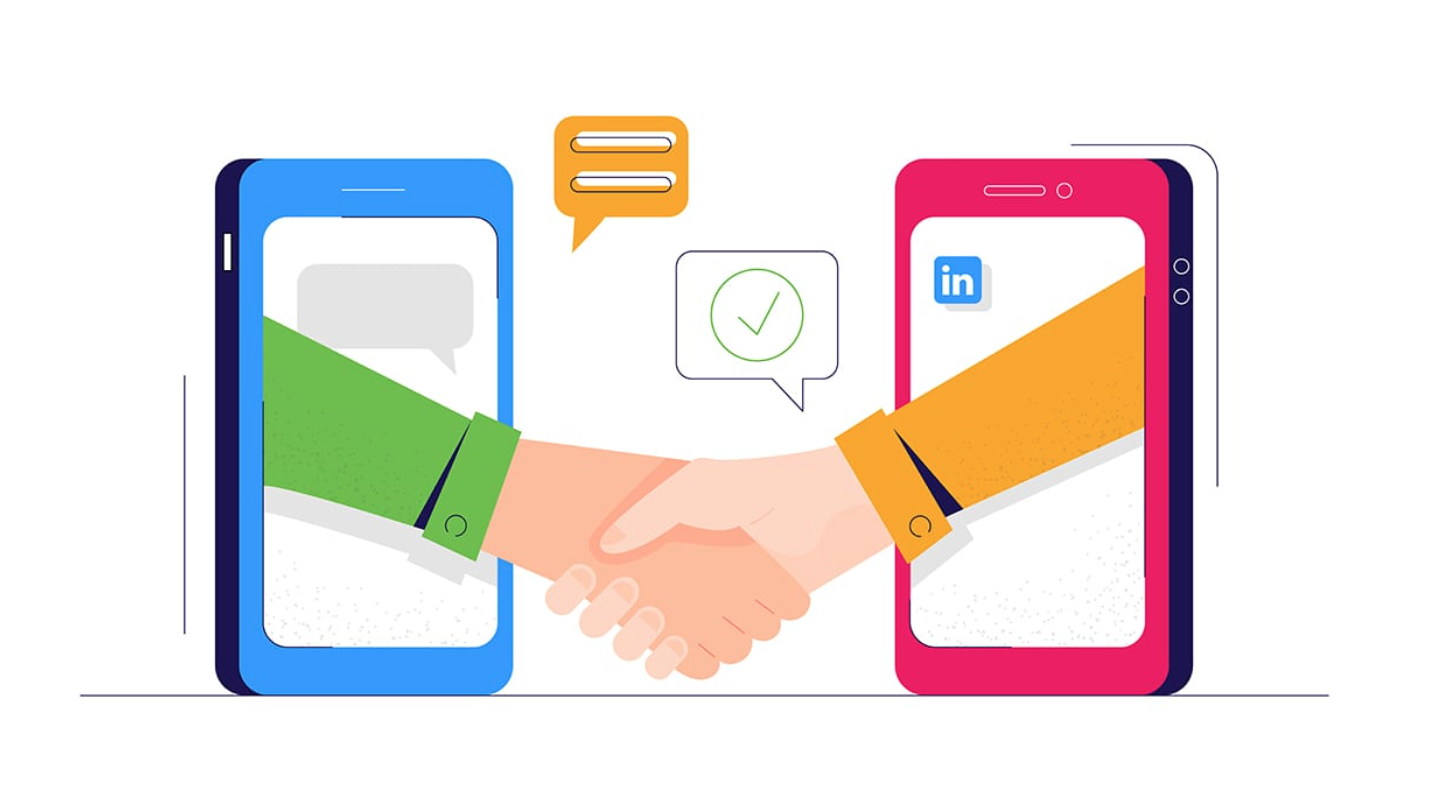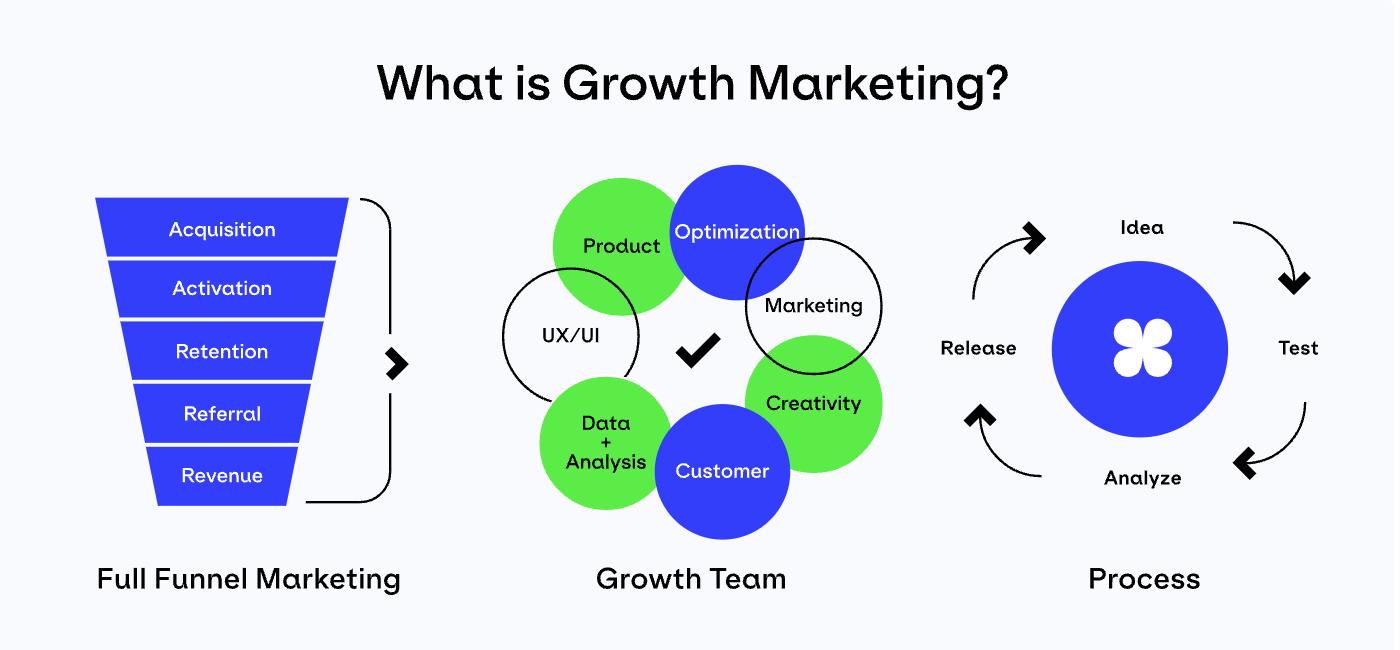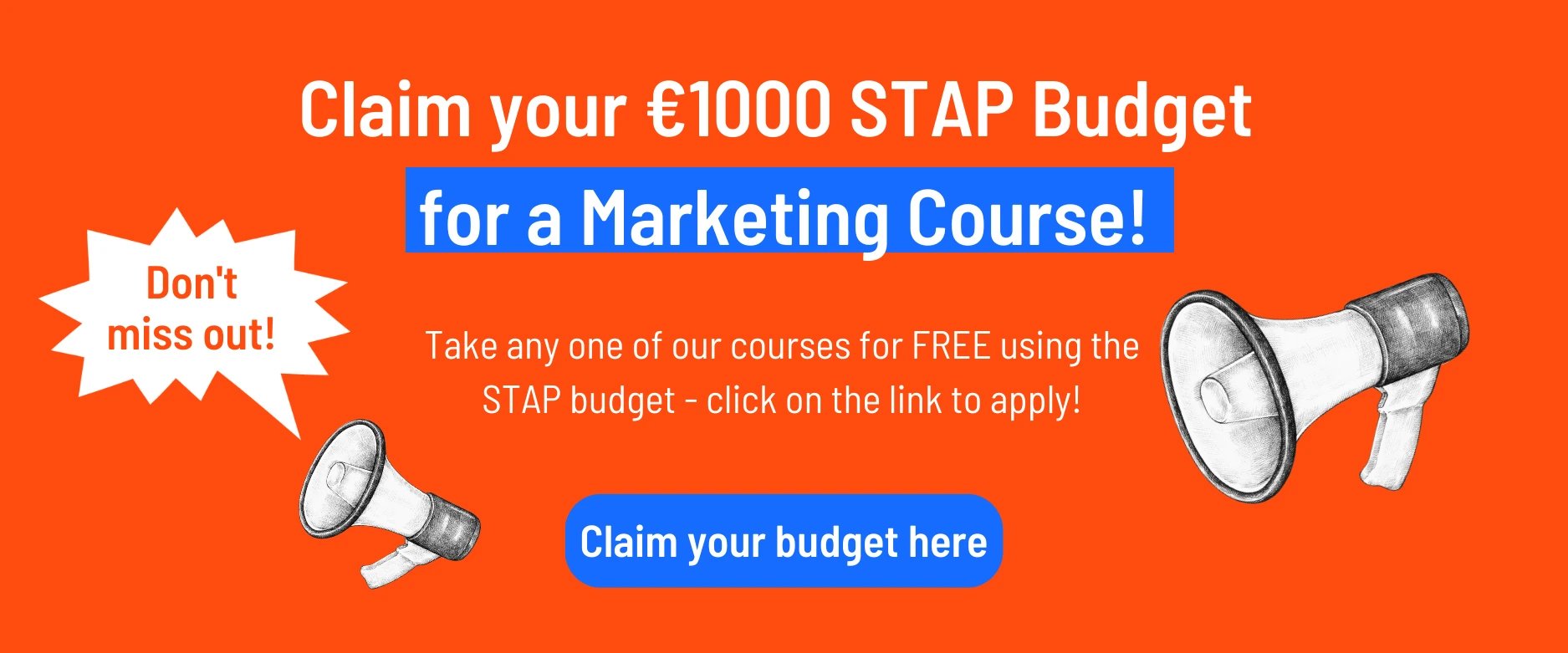What Is Affiliate Marketing? And How Do You Do It?

Are you curious about making money through affiliate marketing but don't know where to start? Like all things worth having, affiliate marketing takes a lot of hard work and commitment to build but, you too can create a recommendation-based revenue stream!
In this comprehensive guide from Growth Tribe, you'll learn everything you need to know about affiliate marketing.
JUMP TO SECTION
- What is Affiliate Marketing?
- Types of Affiliate Marketing
- How to Get Started with Affiliate Marketing
- How To Build an Email List for Affiliate Marketing
- How To Start Affiliate Marketing on Instagram
- Conclusion
- FAQs
What Is Affiliate Marketing?
Affiliate marketing is the act of getting paid a commission every time a customer makes a purchase , as a direct result of your promotion or referral.
For example, let’s say you follow a weekly fitness blog; as you’re scrolling through one of the articles you come across a product recommendation from the author.
The author, who you respect and trust, suggests that this particular product is five-star-phenomenal, and it solves a common pain point in the fitness industry.
Better still, you can purchase it directly using the link provided on the blog. So you click the link, which redirects you to the website product page, and you decide to buy it.
Behind the scenes, the link that you clicked on contains a unique URL code which can be traced back to the author (or affiliate in this case) and once that sale was made, a system records it and the affiliate gets paid.
If you want to read more about this, there is an interesting article about.
Think of it like this, instead of companies paying for advertising, they’re getting other people or businesses to advertise for them at a fraction of the cost.
![]()
It's one big word-of-mouth bonanza.
That’s affiliate marketing in a nutshell but there are several types that we’ll look at in the next chapter.
What are the types of affiliate marketing
Affiliate marketing is categorised by the following types: Unattached, Related and Involved. We’ll break each one down now and how they differ from one another.
Unattached affiliate marketing
Unattached affiliate marketing means that the affiliate has no connection, expertise or authority in the product or service’s niche. This, in turn, makes it an appealing entry point to affiliate marketing as there is no pressure or expectation to make an informed recommendation.
A typical example of unattached affiliate marketing is a pay-per-click (PPC) ad on Google Ads or Facebook Ads.
While unattached affiliate marketing can be considered a low-effort strategy to earn passive income, its very nature means that you won’t build a credible following or community around a product or service. Which for some, will outweigh its accessibility.
Related affiliate marketing
This one may be obvious to those with keen senses! Yes, related affiliate marketing means that the affiliate has some form of a relation between them and the product or service they’re promoting.
Here, the affiliate will have experience in the industry or niche related to the product or service and is considered a credible source of information by their community.
The benefits of related affiliate marketing are two-fold:
- The product or service provider is likely to see a higher conversion rate because of the person promoting it
- The affiliate themselves will see better success, as their audience is primed to accept product and service promotions from someone they trust and respect.
There is just one aspect missing from related affiliation that just so happens to be included in our final type of affiliate marketing.
Involved affiliate marketing
With involved affiliate marketing, the affiliate has experience using the product or service and is comfortable recommending it to their audience.
The connection between brand, affiliate and consumer is deeper here and for the affiliate, there is an additional element of risk involved.
If the audience makes a purchase based on their recommendation and ends up dissatisfied or has a negative experience, it will invariably come back to the affiliate which can damage their reputation.
However, this perceived risk does ensure that the affiliate takes time to really understand and test the product or service before they promote it.
This cultivates a more honest and transparent advertising model which is great for the brand and end-users, the people buying it.
Common types of affiliate marketing
All of the above types of affiliate marketing are employed across these common channels:
- Influencer Marketing
- Blogging
- Email Marketing
- Paid Search Microsites
- Affiliate Website Marketing
- Coupon Sites
How To Start Affiliate Marketing
To get started on your affiliate marketing journey we’ve outlined the following 6 steps:
-
Choose a platform and niche
Whether it’s healthcare, dog grooming, law or even architecture, decide on an industry you want to represent and which platform you want to promote it on.
This could be a blog, which is a relatively low-cost channel, or perhaps YouTube, which is free to create and upload content to. Whatever you decide, the idea is that you can build an audience and engage that community through affiliate marketing.
-
Join an affiliate program
You may already be wise to some of the bigger affiliate programs out there such as Amazon or eBay but there are literally dozens of options.
The trick is distinguishing which programs offer the best results. You might find that one site is high-volume but low-paying, and another could be low-volume but high-paying.
This will of course depend on the industry and it can be expected that niche products will tend to pay more for affiliates but have less traffic.
HubSpot kindly put together a list of 49 of the best affiliate programs.
-
Choose the products you want to promote
As we know, unattached affiliate marketing means that you don’t necessarily need any experience or knowledge of a product or service in order to sell it.
However, your best shot at success is to choose a product or service that you know at least on a moderate level. Even better if it’s something you’ve used and can recommend.
If you spend time building and curating an audience that appreciates and listens to your advice, it makes sense to utilise that by recommending products and services that will benefit them. Which will ultimately benefit you.
-
Start creating content
This might be a 5-minute video that compares several products or it could be a written review on your blog that gives a deep dive into a particular service you’ve been trialling.
No matter the content, be sure to make it original and pack it full of value for your audience. This is going to help your engagements and CRO while establishing you as an authority in the niche.
Check out this list of content ideas for affiliate marketing.
-
Track and optimise
Use affiliate marketing tracking tools to see what’s happening. These programs will let you see how many people you’re reaching, who’s clicking, and also keep a log of any sales or leads generated from your unique tracking links.
Once you have a clear picture of how your content is performing, you can start tweaking things to find what works best and increase your conversion rate.
-
Pick a payment structure
There are typically four payment structures for affiliate marketing:
- Pay-Per-Click - paid each time a person clicks through to a site
- Pay-Per-Action - paid each time a sale is made or a lead is generated
- Pay-Per-Impression - paid for clicks on website ads
- Two-Tier Affiliate Programs - paid for your own sales and for any sales made within a network that you oversee
-Apr-07-2023-02-39-40-4381-PM.jpg?width=750&height=480&name=Resized%20Blog%20Headers%20(2)-Apr-07-2023-02-39-40-4381-PM.jpg)
How To Build an Email List for Affiliate Marketing
Contrary to what people might have you believe, email marketing is as strong as ever. It’s forecasted that this year alone there will be 347 billion emails sent.
Consumers check their email multiple times per day and are generally happy to receive information from their favourite brands in this way.
87% of digital marketers leverage email in their strategies and as an affiliate marketer, you should absolutely consider doing the same.
So how do you build an email list for affiliate marketing? Read on to find out more…
![]()
Contrary to what people might have you believe, email marketing is as strong as ever.
-
Sign up for an email provider
Email marketing software will allow you to create, automate, track, monitor and analyse all of your email efforts.
As with all software, there’s plenty to choose from and although they share a lot of features, there are a few standouts such as MailChimp, HubSpot and ConvertKit.
Another thing to consider is your country’s privacy regulations, here in Europe we have GDPR legislation which means you’d have to gain permission from the customer first, before sending out marketing communications.
Check out these guidelines around contacting customers.
-
Use opt-in forms to get subscribers
These are the forms that pop up when you browse websites or other digital platforms, asking for basic information like name and email address.
Opt-in or sign-up forms are essential to getting subscribers and building your email list so be considerate when creating them.
Think about the design, when and where they pop up and check the usability, make them easy to read and user friendly.
-
Create an email marketing campaign
An email marketing campaign will allow you to send a predetermined set of emails to your audience.
This could be a welcome series that introduces new subscribers to what you do and how you do it. Or a series of emails on a specific topic. Or, you might be promoting your posts and other media assets.
The idea of any email campaign is to bring value to your customer so that it may translate into a sale further down the road.
Another aspect to consider is email automation. With automation, you can set parameters that send certain emails out to users depending on the action they have taken.
This helps to ensure that the customer journey is consistent and helps you identify areas of improvement with analytics, like click-through rates and open rates.
-
Add in your affiliate links
Now that you have an email provider, optimised forms, and an email campaign ready to go with great content to boot; you’re ready to start inserting your affiliate links.
A good way to do this is to supplement your existing email series with additional emails that contain your affiliate promotions.
This helps the affiliate links feel more native to the content, rather than being dropped into an unrelated email body.
For example, you might start with a welcome email followed by another email that identifies a common pain point in your niche, so you then create a brand new email to follow that suggests your affiliate product or service as a solution to that pain point.
This feels more natural and less spammy than simply adding links and graphics to existing emails.
How To Start Affiliate Marketing on Instagram
Almost 68% of affiliate marketers connect with customers on social media. With good reason too.
Platforms like Instagram are home to around 1 billion users globally and Instagram themselves claim that 70% of users research purchases on their app.
This makes Instagram a prime channel for affiliate marketers to build and engage with audiences. As with all things, there are some proven and trusted ways to succeed that we’ll look at in more detail here.
-
Find the right audience
If you poke around Instagram for long enough you’ll no doubt notice the type of content varies depending on the industry.
Travel and lifestyle brands favour high-quality imagery that speaks to our desires. Fitness and wellbeing brands love video content that is motivational and educational. Tech and software brands adore infographics and explainer posts.
Check out the general landscape to get a feel for what type of content resonates with your niche audience and aim to produce original and exciting content in that vein.
-
Engage the community
Make and reply to comments, ‘like’ posts, and share content from like-minded creators.
Think of it as digital networking where you’re trying to edge your way into the conversation and bring attention to your efforts.
-
Schedule content and posts
Get organised! One of the biggest contributors to growing a following and becoming an authority is to post regularly and consistently.
It doesn't have to be every day but find a schedule that works for you and your audience, and show up every time they expect it.
-
Insert your affiliate links
Make sure your links are obvious and unmissable. There are a few ways to add links on Instagram such as:
- In your bio - add links directly into your bio, this works well for people representing one brand consistently without the need to keep changing it
- Link sticker in stories - Instagram now lets anyone (it was restricted to a follower threshold previously) add a link to their story post. Do this habitually!
- Create story highlights - these are the small circles you see below the bio where creators and group stories together, making it easier to find certain content
Final Thoughts
So, there you have it - affiliate marketing in a nutshell!
As you can see, it's a fantastic way to monetise your website or blog and earn passive income. With the right strategy and a little bit of hard work, you can turn your affiliate marketing efforts into a full-time income stream.
If you're feeling inspired to dive deeper into the world of affiliate marketing, we encourage you to check out some of the other great resources available online.
And remember, the key to success in affiliate marketing is to stay curious, stay informed, and always be on the lookout for new opportunities to promote products and services you believe in.
So, what are you waiting for? Start exploring the exciting world of affiliate marketing today!
FAQs
Is affiliate marketing easy for beginners?
Yes, affiliate marketing is relatively easy for beginners to get started with as it does not require a lot of technical knowledge or a large investment. However, like any other marketing strategy, it requires effort, research, and a willingness to learn and adapt to be successful.
How to start affiliate marketing with no money?
Here are some tips to start affiliate marketing with a little money:
- Find affiliate programs that are free to join.
- Use free platforms such as social media and blogging to promote affiliate products.
- Create high-quality content that drives traffic to your affiliate links.
- Utilise free SEO techniques to improve your content's visibility in search engines.
- Network with other affiliate marketers and industry professionals for guidance and support.
What is the golden rule of affiliate marketing?
Ah, the golden rule of affiliate marketing - it's a simple one: promote products that you genuinely believe in and that are relevant to your audience. It's a win-win situation - you get to earn a commission on sales, while your audience gets to discover products that they'll love. So, have fun, be authentic, and spread the word about products you're passionate about!
Categories
- Business & Innovation (72)
- Growth & Marketing (61)
- Data & Analytics (25)
- UX Design (13)
- Alumni Stories (11)
Related articles
Latest articles
Boost your Revenue Growth using LinkedIn Social Selling
In a digital age where connections mean everything, leveraging...
The Power of Collaboration: Enhancing Team Performance Tactics
As organisations navigate complex challenges and strive for...
The Ultimate guide to boost organic growth in 2024
Imagine organic growth as the business equivalent of sculpting...
The best 2024 Business Development Guide
What exactly is business development, and how does it differ from...














